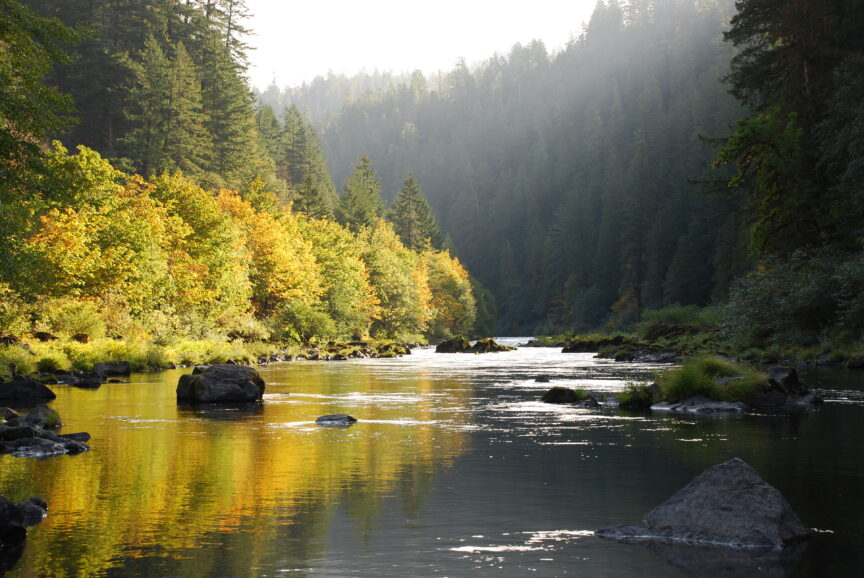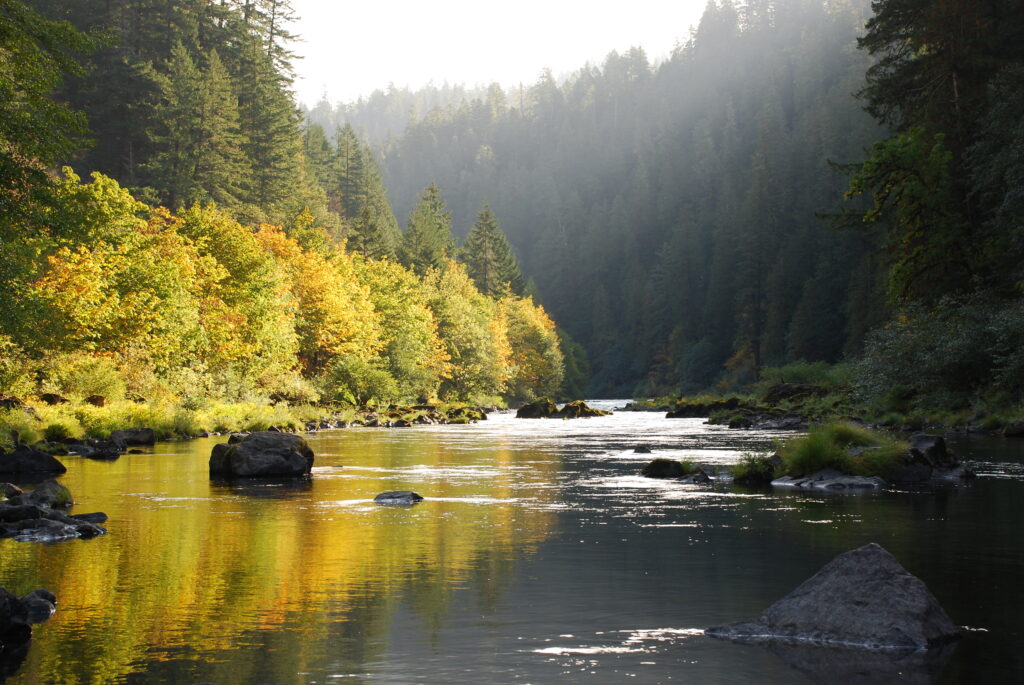
On April 22nd, the Oregon Fish and Wildlife Commission voted 4-3 to end the hatchery summer steelhead program on the North Umpqua River.
Wild Steelheaders had requested that the Commission implement a 10-year pause on the program (rather than simply reduce the number of hatchery smolts released, as recommended by Oregon Department of Fish and Wildlife staff), but the Commission opted to end the program entirely. We support that decision.
While Wild Steelheaders’ director, Dean Finnerty, covered this news in our recent newsletter, this post does a deeper dive into the relevant background of this issue, our position on hatchery programs generally, the Commission’s decision, and ends with a summary of next steps for the basin.
Background on North Umpqua Steelhead
Wild summer steelhead have struggled in the North Umpqua in recent years, and the proportion of hatchery origin spawners (pHOS) in the basin has long exceeded the thresholds set in applicable agency plans. The Commission considered both of these factors at length in making its decision.
The Coastal Multi-Species Conservation and Management Plan (CMP) governs ODFW’s management of North Umpqua summer steelhead. The CMP specifies a “desired” abundance threshold of 4,200 natural origin spawners, and a “critical” abundance threshold of 1,200. The CMP defines the “critical abundance” threshold to be a point “below which long-term persistence becomes uncertain,” while serving as a safeguard “to allow time for management actions to be implemented to improve a population’s status before risk becomes too great.”
When ODFW completed its 2022 Assessment of Naturally Produced Summer Steelhead in the Umpqua River Basin in preparation for this Commission decision, the assessment estimated escapement of only 449 wild summer steelhead in the North Umpqua for 2021. In other words, escapement of wild summer steelhead in the North Umpqua River last year was 37.4% of the CMP’s “critical” abundance threshold.
The dwindling run size meant wild summer steelhead were vulnerable to the known effects of hatchery fish using the same habitats.
At the same time, ODFW’s hatchery summer steelhead program on the North Umpqua has long been out of compliance with the CMP. The CMP designated a pHOS target for North Umpqua summer steelhead of less than 10%, to limit the negative impacts of hatchery fish on the wild population.
Unfortunately, the cumulative average pHOS over the past decade has significantly surpassed the pHOS target required by the CMP. That ongoing, unremedied pHOS exceedance issue triggered the adaptive management provisions of the CMP relating to permissible levels of hatchery fish that spawn in the wild.
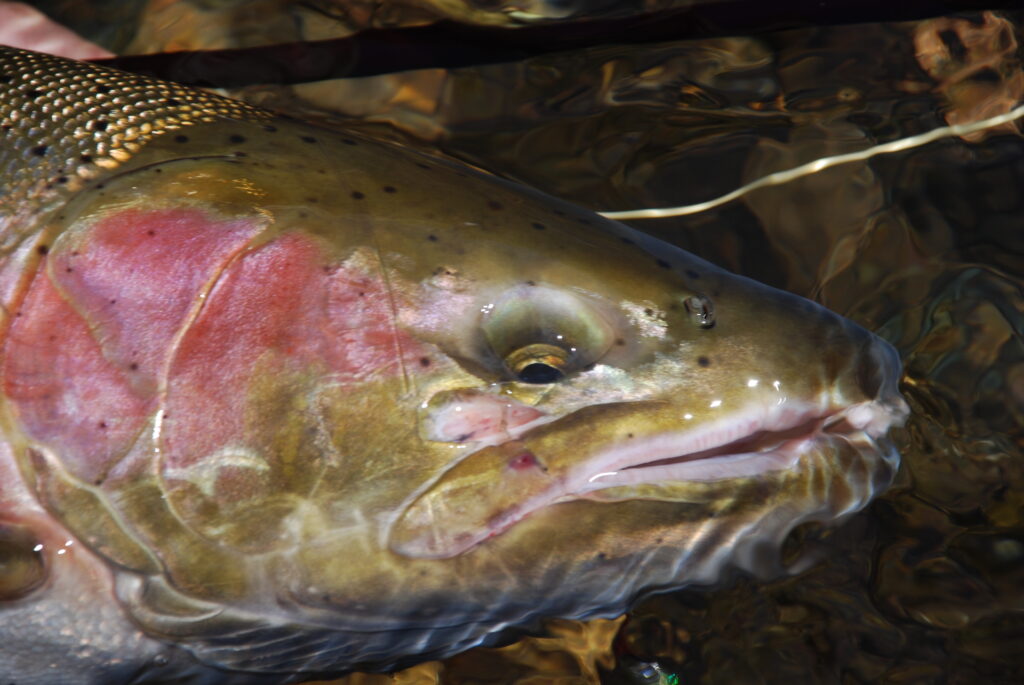
Wild Steelheaders’ position on hatcheries
Wild Steelheaders United is not “anti-hatchery.” Indeed, Finnerty prefaced his comments before the Commission on April 22nd by stating that “we support the popular South Umpqua hatchery winter steelhead program, the hatchery spring chinook program, as well as the mitigation coho and rainbow trout programs historically provided by Rock Creek Hatchery.”
Wild Steelheaders considers the appropriateness of hatchery programs on a case-by-case basis. Here, we made a narrow determination that the hatchery summer steelhead program on the North Umpqua presented an unacceptable risk to wild fish, and that risk needed to be eliminated because the wild fish were below the CMP’s critical abundance threshold. Accordingly, we recommended a pause in the program for 10 years.
The Commission did not consider the question of whether to close or rebuild Rock Creek Hatchery (the facility was destroyed in 2020 by the Archie Creek Fire), or to change management of any hatchery program other than summer steelhead on the North Umpqua. We only advocated at the meeting for pausing the hatchery summer steelhead program, and that was the only program subject to change in that meeting.
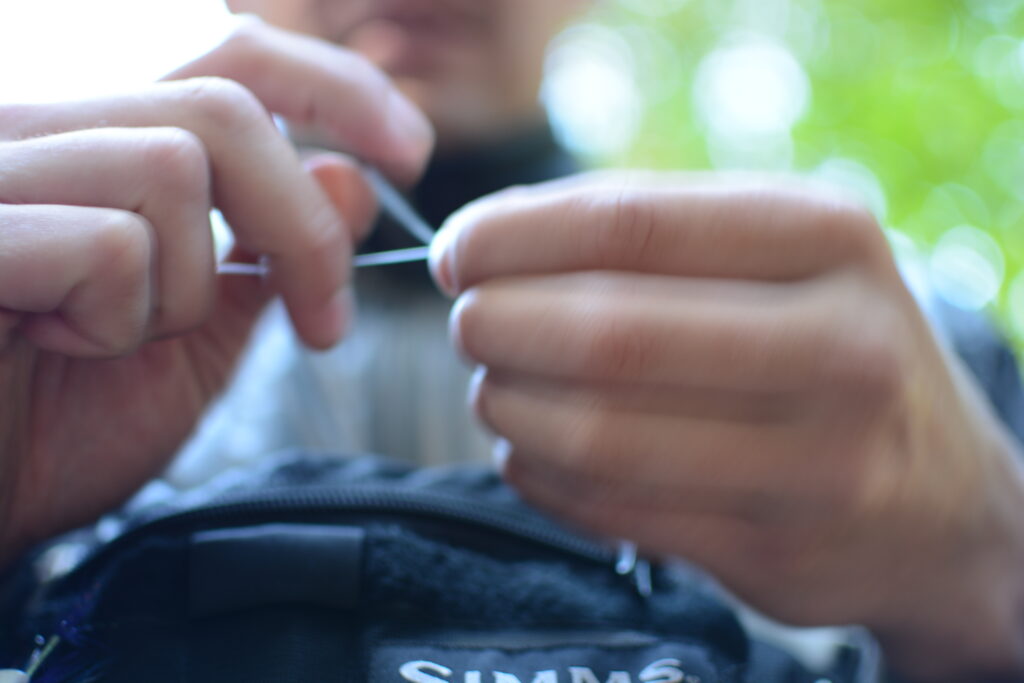
The Commission’s April 22nd Decision
The Commission’s decision to end the North Umpqua hatchery summer steelhead program was one of the options put forward by ODFW for the April 22nd meeting, even though it wasn’t the option ultimately recommended by agency staff. In fact, the “Agenda Item Summary” for the April 22nd Commission meeting (i.e., the agency staff document summarizing the issue and possible next steps) proposed five options for the North Umpqua hatchery summer steelhead program.
These included: (1) discontinuing the hatchery summer steelhead program entirely, (2) increasing removal of hatchery adult steelhead in Rock Creek, (3) reducing hatchery steelhead smolt releases to 30,000, (4) a combination of increasing removal of adult hatchery steelhead and reducing releases of smolts, and (5) no change to current releases or hatchery adult removals.
In addition to our primary concerns about vulnerability of the wild summer steelhead in the North Umpqua to any hatchery fish presence, we also had practical concerns about option #4. The staff recommendation would have provided a poor return on investment (i.e., a smolt release resulting in only 300-600 adult hatchery fish returns, many of which would not be caught by anglers), while also requiring the Department to hire 2-3 staff to operate the fish trap intended to control pHOS.
Ultimately, the Commission decided to proceed with option #1. Adopting an action other than that recommended by agency staff is not uncommon. Agency staff and Commission members make different – though often overlapping — considerations in policymaking. Agency staff are responsible for providing information to the Commission on the pros and cons of their options so the Commission can make an informed decision. The Commission is responsible for considering that information and how it relates to the bigger picture of impacts to the resource, fiscal effects, social dynamics, and applicable law.
Commission members also apply their professional and personal experience in determining their position on a matter. Here, four of the Commission members opted to support a different management option than that recommended by ODFW. That is appropriate in these settings. If Commissions were required to adopt the same options recommended by staff, the process would be unnecessary.
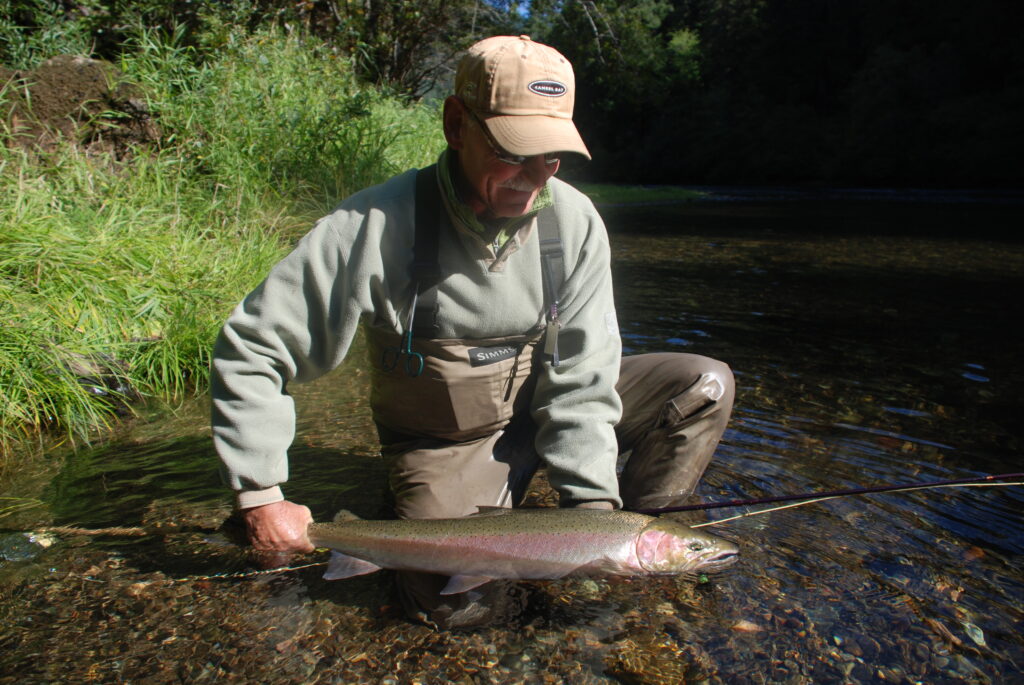
Next Steps in the Basin
On April 26th, several parties from Douglas County filed suit against ODFW and the Commission regarding the April 22nd decision. That process will work its way through the courts and we do not expect to be involved in it.
In the meantime, we will move forward on the assumption that the Commission’s decision will stand and the hatchery summer steelhead program will end. When that happens, ODFW and its partners in fishery management, including Wild Steelheaders, must:
- Closely monitor wild steelhead returns in the coming years.
- Study the effects of ending the program on the productivity and abundance of the wild population (ideally against a control such as the Siletz River, which is another coastal stream with wild and hatchery summer steelhead).
- Address other factors that limit wild steelhead populations as identified in the Assessment (e.g., predation by non-native smallmouth and striped bass, increased stream temperatures likely caused by low flows and climate change).
- Participate in discussions about tribal co-management of the Umpqua fishery, as raised by tribal representatives’ testimony at the April 22nd meeting.
It’s heartening that a majority of the Oregon Fish and Wildlife Commission understood well the current extremely precarious status of wild summer steelhead in the North Umpqua, and acted accordingly. We salute their thorough and rational examination of the facts, and will look for further opportunities to work with ODFW to implement the Commission’s decision and recover this legendary run on one of the most famous wild steelhead fisheries in North America.
We’re pleased to see ODFW taking a cautionary approach this year with the North Umpqua summer steelhead fishery, with additional adult monitoring and preparing the public for possible angling closures. We at Wild Steelheaders United stand ready to lay down our rods for another season if it is determined that these iconic fish need the rest.
For more information on our work in the North Umpqua and across the Pacific Northwest, go here.


